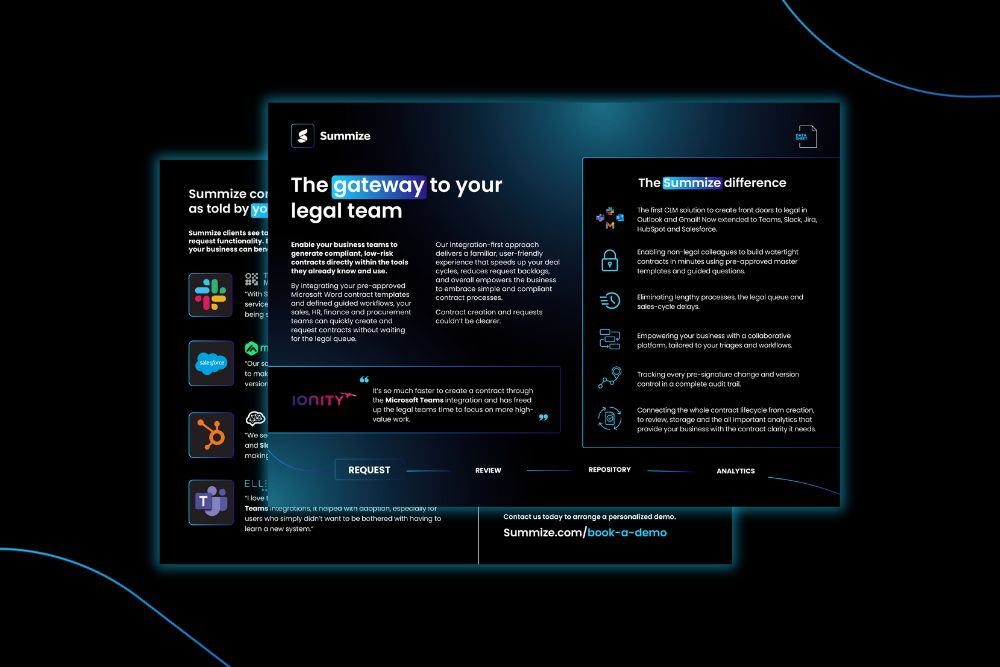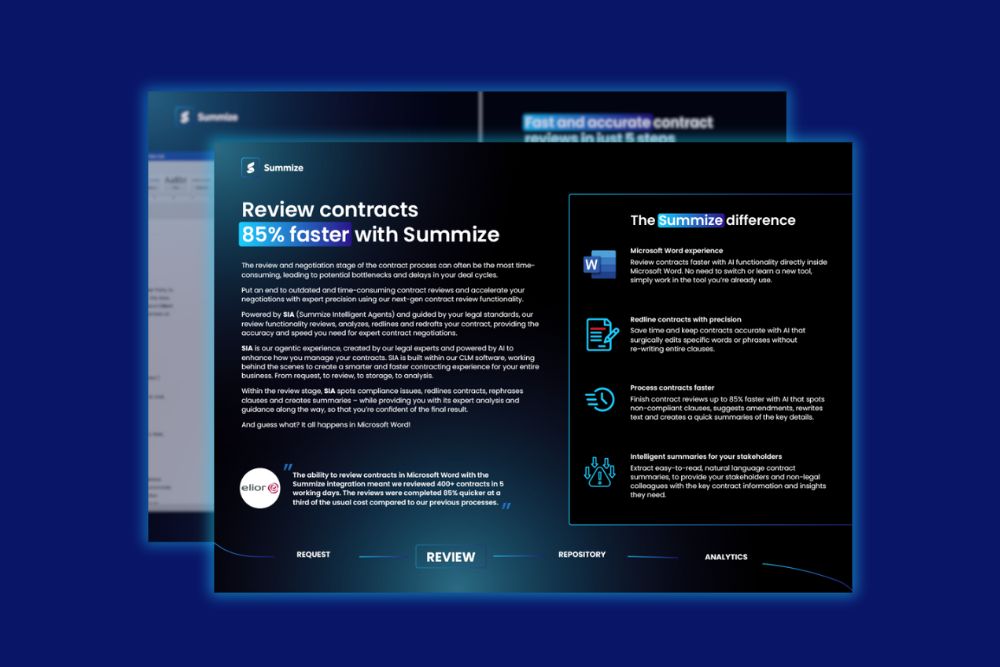CLM Hub:
Your Essential Guide
Choosing a Contract Lifecycle Management (CLM) solution is a big opportunity for your business, but how should you begin? Let’s dive into the key CLM essentials you need to know.
Explore our CLM Hub
From understanding the CLM process, how it all works, to the benefits it creates.
Explore all of this and more in our CLM Hub.

What is a CLM?
Contract lifecycle management (CLM) is the management of a business’ contracts covering all parts of the contract journey, from creation, to review, to analysis, to renewal.
Implementing a robust CLM strategy can greatly benefit businesses by improving efficiency, reducing legal and financial risks and accelerating business revenue.
What is the CLM process?
Even though each contract and each business is different, the contract lifecycle can be quite similar in terms of the process.
To help you understand the most common CLM process, we have put together the six stages of contract lifecycle management. From creation, to execution, to reporting.
Learn more about all six stages of the CLM process.

What are the CLM benefits?

Reduced risk
Leading CLM software breaks down contractual information into easy-to-read summaries, highlighting risk and including comments, red flags and notes.

Faster revenue generation
CLM software reduces legal bottlenecks, helps sales teams self-serve and ultimately accelerates the contract sales-cycles, enabling sales teams to close deals faster.

Uncovered key data
The best CLM tools reveal hidden data, helping stakeholders uncover patterns, assess risks and identify opportunities, empowering them to make informed business decisions driven by insights.
What is the best CLM software?
The once underserved market of CLM is now overflowing with vendors, all with a different approach. Seeing a huge range of features can make you want them all, even if they are not the most useful or necessary for your team.
We've narrowed down the best contract lifecycle management software on the market, to help you identify the essential features you should consider in your search for your CLM solution.


Considerations for a successful CLM implementation
CLM implementation is a process that requires strategic foresight and careful execution. From understanding how your chosen CLM provider executes your implementation plan, to making sure your entire business is prepared.
Learn more about how to avoid common pitfalls in your CLM implementation and gather expert tips for a successful contract management rollout.
FAQs about CLM
CLM is short for Contract Lifecycle Management. Contract Lifecycle Management refers to the end-to-end process of effectively managing contracts throughout their lifecycle. From pre- to post-signature.
In our guide, learn how CLM works.
Contract Lifecycle Management (CLM) automates the entire contract lifecycle, digitalising and automating each process. This enables businesses to improve their efficiency, eliminate delays, mitigate risk and enhance cross-functional collaboration.
In our guide, learn even more about the purpose and benefits of CLM.
Contract Lifecycle Management (CLM) software is a tool that helps organisations manage their contract portfolio throughout the contract's entire lifecycle.
In our guide, learn how CLM software works.
Contract Lifecycle Management (CLM) can be used by businesses of all shapes and sizes. Typically the in-house legal team or General Counsel will take ownership of CLM software, but non-legal teams such as sales, HR, procurement and finance also benefit from CLM solutions.
In our guide, learn even more about the use and benefits of CLM.
Learn even more about CLM in our helpful guides
Ready for next-level CLM software?
Get your first use case live in just 4 weeks with our sprint-based implementation plan.
Watch an on-demand demo
Learn the how and why of Summize in minutes.
Pricing
We tailor everything to your business.




